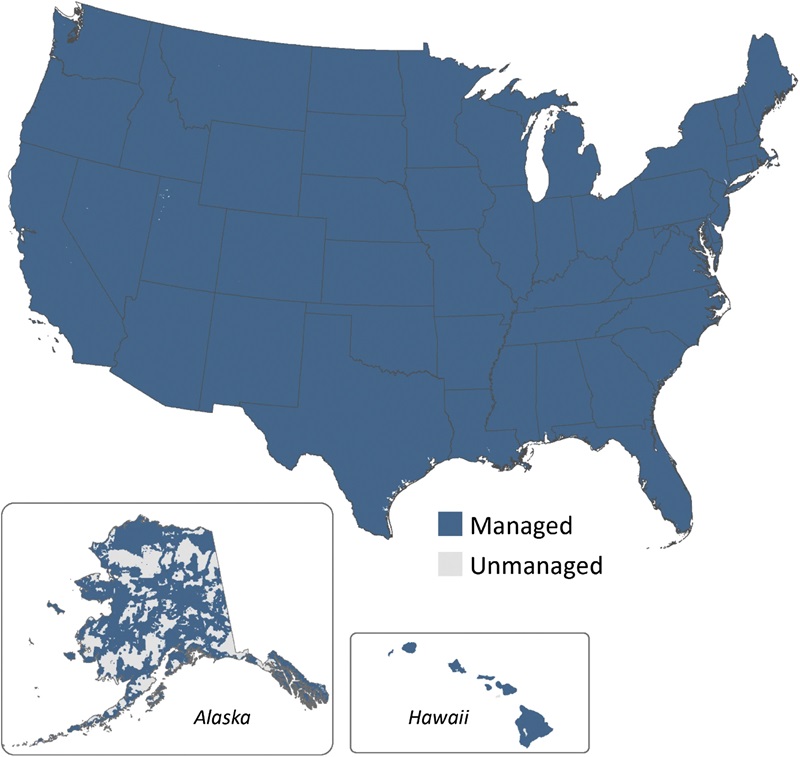The densely forested South American nation of Guyana is fast becoming the world’s newest petro-state, allowing fossil fuel giants like ExxonMobil to hunt for what researchers have referred to as “carbon bombs” on its seabed.
International oil companies, led by US firm ExxonMobil, plan to extract 11 billion barrels of oil from Guyana’s ocean floor and sell it abroad to be burned, thereby worsening global warming. The country pumped its first oil in 2020.
Despite this, late last month Guyanese president Irfaan Ali defended his country’s green credentials in a heated interview with the BBC’s Hardtalk programme, which went viral on social media. “Even with our greatest exploration of the oil and gas resources we have now, we will still be net zero,” he said, referring to the country’s greenhouse gas emissions.
“We have the lowest rate of deforestation in the world… Guyana will still be net zero”
President Irfaan Ali says Guyana won’t take lectures on climate change as it exploits its huge offshore oil and gas reserves
https://t.co/TKxhR6r3ur pic.twitter.com/xIJTgRsfZP
— BBC HARDtalk (@BBCHARDtalk) March 29, 2024
The case of Guyana shows how countries with large forests can use unclear rules on counting national carbon emissions to justify fossil fuel production.
Michael Lazarus, a scientist with the Stockholm Environment Institute (SEI), told Climate Home it is “absurd” to claim that capturing and storing carbon dioxide (CO2) in forests offsets the emissions impact of oil production, as “they have nothing to do with each other than geographic proximity”.
Official United Nations carbon accounting rules, drawn up nearly 20 years ago by the Intergovernmental Panel on Climate Change (IPCC), allow Guyana to claim net-zero status because they do not specify which types of forest governments can take credit for preserving – and also because the emissions from oil are counted in the country where it is used and burned, not where it is produced.
Experts said governments are taking advantage of having barely-touched forests on their land that suck up CO2, and argued that fossil fuel-rich nations like Guyana should bear part of the moral responsibility for the emissions of their polluting products.
“The problem is that within the country, you are allowing the emissions to continue or even to rise, and then you are trying to balance that out internally by saying that we have this forest,” said Souparna Lahiri from the Global Forest Coalition.
Carbon-negative club
Around 93% of Guyana is covered in forest – more than any other nation but its neighbour Suriname. The population numbers just 800,000, mostly clustered on its coastline, and those people on average emit slightly less than the global average per capita.
Although the country’s non-forestry emissions are growing steadily, CO2 absorption by its vast forests more than compensates for that.
In its emissions inventory sent to the United Nations, the government claimed: “Guyana is a net carbon sink, with its lush managed forest cover removing up to ten times more than the emissions produced in the country up to the year 2022”.
Other small, sparsely-populated forest-covered nations like Suriname, Panama and Bhutan assert they are carbon-negative too.
While not claiming the same accolade, leaders of bigger forest nations like Russia and Brazil have also used their forests to defend their climate record.
In 2021, Russian President Vladimir Putin told a US-hosted summit: “Russia makes a gigantic contribution to absorbing global emissions – both ours and from elsewhere – owing to the great absorption capacity of our ecosystems.”
Despite rising Brazilian deforestation under Jair Bolsonaro, the former president told the same summit that the Amazon’s carbon absorption was evidence that “Brazil is at the very forefront of efforts to tackle global warming”.
Managed vs unmanaged
International carbon accounting rules essentially leave it up to governments to decide how much credit they claim for CO2 absorption by national forests, with many opting to count it all.
In 2006, scientists working with the IPCC came up with a distinction between “managed” land – where greenhouse gas emissions and removals should be attributed to humans and nations – and “unmanaged” land where forests are natural and governments should neither be credited nor blamed for emissions levels.
The IPCC defined “managed” land as “land where human interventions and practices have been applied to perform production, ecological or social functions”. Those could include planting a commercial forest, protecting a forest from fire, or designating it for conservation.
In its national emissions inventory report, Guyana does not differentiate between “managed” and “unmanaged land” – and claims credit for CO2 sequestration by all of its forests.
Guyanese forestry expert Michelle Kalamandeen told Climate Home the government is doing well at protecting the rainforest but should not classify it all as managed by the state. Much of it – particularly in the south – is inaccessible, so “they’re just relying on remoteness for protection of it”, she explained.
The Global Forest Coalition’s Lahiri agreed, saying that most of Guyana’s forest seems to be intact old-growth forest “so it is not a plantation or managed forest in that sense”.
A global issue
From this perspective, Guyana is by no means the only country that appears to be over-counting its emission sinks. A 2018 study in the journal Carbon Balance and Management found that over fourth-fifths of the 101 countries analysed counted all their land as managed.
Even those countries that make a distinction often counted all of their forest – but not all their land – as managed. Australia is one example.
Even the rare few that consider some of their forests “unmanaged” have drawn the line in different places.
Russia counts most of its forests as managed with a few exceptions, the US counts everything outside of Alaska (and much inside it) as managed, and Canada counts everything it tries to protect from fires.

The USA’s “managed” land (blue) and “unmanaged” land (grey) (Photos: Carbon Balance and Management)
Brazil stands out as the exception, counting just under half of its huge forests as managed and foregoing a carbon accounting boost from the other half.
Oil emissions
The other carbon accounting orthodoxy Guyana relies on is attributing emissions from burning fossil fuels like oil to the countries where they are burned, not where they are produced.
The vast majority of Guyana’s oil will be exported to regions like Europe and Asia or to neighbouring Brazil, meaning that emissions from its use will be counted there.
This way of measuring emissions prevents them from being double-counted – but it lets extracting nations off the hook for the carbon pollution caused by the fossil fuels they sell abroad.
Kalamandeen said oil-producing countries have some responsibility for the emissions created by the consumption of their fossil fuels, while the home nations of fossil fuel companies should also step up. In Guyana’s case, that would be the US and China, as the oil extraction consortium is made up of ExxonMobil, Hess Corporation and the China National Offshore Oil Corporation.
SEI’s Lazarus described the current system as an “essential accountability framework for governments and civil society” – but agreed that producers should be held morally accountable too.
Without that, he said, “we’d turn a blind eye to… the lock-in effects of long-lived fossil fuel supply investments that impede the global clean energy transition”.
